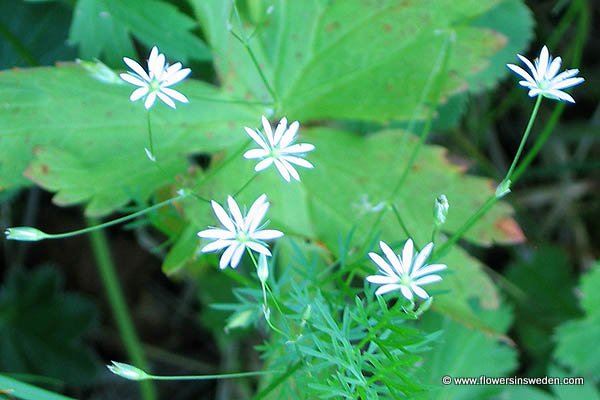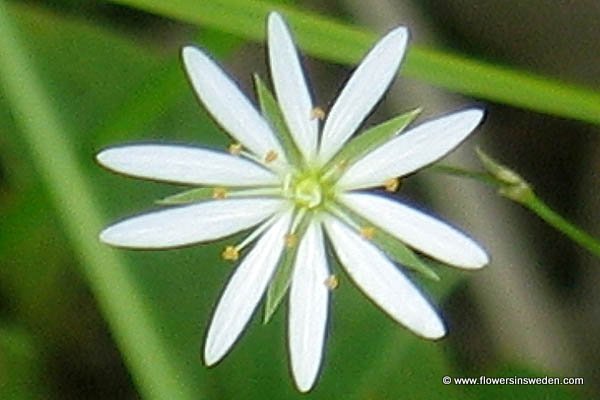|
|
| Life form: |
| Perennial |
| Stems: |
| Central stem is glabrous, 4-angled, and rather weak, causing the plant to lean over in the absence of supportive vegetation. |
| Leaves: |
| Opposite, lanceolate-linear or linear, smooth along the margins, sessile, and glabrous |
| Flowers: |
| Each flower has a corolla with 5 deeply divided white petals (which can appear to be 10 petals), 10 stamens with brown or reddish brown anthers, a green pistil with 3 styles, and 5 green sepals that are lanceolate. Each sepal has 3 conspicuous veins along its outer surface, which is also somewhat ciliate or pubescent. The petals of the flower are longer than the sepals. |
| Flowering Period: |
| June, July, August |
| Fruits: |
| Straw-colored or light brown seed capsule, numerous small seeds; Capsule ovoid-oblongoid and open at the top, where a few erect teeth occur along the upper rim. Each seed is oval-orbicular and somewhat flattened; its surface is rough and pebbly. |
| Habitat: |
| Coast, pastureland, meadows, farmland, settlements |

Derivation of the botanical name:
Stellaria, from the Latin stella for "star" because of the star-like shape of the flowers.
graminea, of or pertaining to grass, grassy; grass like.
- The standard author abbreviation L. is used to indicate Carl Linnaeus (1707 – 1778), a Swedish botanist, physician, and zoologist, the father of modern taxonomy.

|



